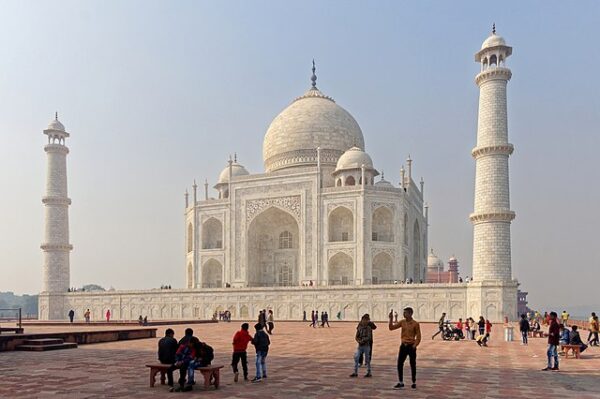Mumtaz Mahal, born Arjumand Banu Begum, was not just the beloved wife of Mughal Emperor Shah Jahan I, but the heartbeat of his soul. Her unparalleled beauty, grace, and boundless compassion left an indelible mark on the emperor of India. Tragedy struck on June 17, 1631, when Mumtaz died giving birth to their fourteenth child, plunging Shah Jahan into profound grief. His sorrow ignited a vision of immortalizing their love in an architectural marvel, leading to a 17-year odyssey to create the Taj Mahal—a timeless testament to their undying bond.
Mumtaz Mahal was born in 1593 into a Persian noble family. She married Prince Khurram, later known as Shah Jahan, in 1612. Their marriage was marked by mutual affection and companionship. Mumtaz was Shah Jahan’s trusted confidante and advisor, and she accompanied him on military campaigns and state affairs. She bore him fourteen children, but the complications of her last childbirth led to her tragic demise in 1631 at Burhanpur, in present-day Madhya Pradesh.
The death of Mumtaz Mahal plunged Shah Jahan into deep sorrow. Overwhelmed by grief, he withdrew from public affairs for a period. Legend has it that the emperor’s hair turned white overnight due to the shock and sadness. To honor her memory and their deep love, Shah Jahan resolved to build a monument unlike any other, one that would encapsulate the beauty and grandeur of their love. This decision marked the beginning of the construction of the Taj Mahal, a project that would span 22 years and become one of the most famous structures in the world.
Construction of the Taj Mahal began in 1632, a year after Mumtaz Mahal’s death. The mausoleum was built on the right bank of the Yamuna River in the city of Agra. The project involved thousands of artisans, laborers, and craftsmen from across the Mughal Empire and beyond. Renowned architects, including Ustad Ahmad Lahauri, were commissioned to design the Taj Mahal, blending elements of Islamic, Persian, Ottoman Turkish, and Indian architectural styles.
The Taj Mahal was constructed from white marble inlaid with semi-precious stones, including jade, crystal, turquoise, and lapis lazuli. The central dome rises to a height of 73 meters (240 feet) and is surrounded by four smaller domes. The mausoleum is set within expansive gardens that follow the classical Mughal charbagh (quadrilateral garden) layout, symbolizing the Islamic concept of paradise. The intricate floral designs and calligraphy that adorn the walls of the Taj Mahal are testament to the high level of artistry and craftsmanship involved in its creation.
The interiors of the Taj Mahal are equally exquisite. The cenotaphs of Mumtaz Mahal and Shah Jahan are housed in the main chamber, though their actual graves lie in a lower crypt. The walls are adorned with intricate carvings and verses from the Quran, reflecting the spiritual and cultural richness of the Mughal era. The play of light inside the mausoleum, with sunlight filtering through the marble lattices, creates a serene and otherworldly ambiance.
The completion of the Taj Mahal in 1653 marked the culmination of Shah Jahan’s devotion to Mumtaz Mahal. However, the emperor’s later years were marked by political turmoil. In 1658, Shah Jahan was deposed by his son Aurangzeb and spent the remaining years of his life under house arrest in Agra Fort, with a view of the Taj Mahal. Upon his death in 1666, Shah Jahan was laid to rest beside Mumtaz Mahal in the Taj Mahal, thus uniting the lovers for eternity.
Today, the Taj Mahal stands as a symbol of enduring love and one of the most iconic monuments in the world. It attracts millions of visitors annually and is recognized as a UNESCO World Heritage Site. The legacy of Mumtaz Mahal and Shah Jahan’s love story continues to resonate, immortalized in the timeless beauty of the Taj Mahal.






